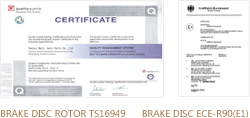
Most of us associate vehicle pollution with the exhaust pipe. It’s visible, it's regulated, and it has been the focus of automotive engineering for decades. But as engines become cleaner, a different, less obvious source of pollution is taking center stage: traditional brakes.
Every time a driver presses the brake pedal in a car, a pad clamps down on a metal disc. This friction is what stops the vehicle, but it also grinds away microscopic particles from both the pad and the disc. This fine dust, composed of iron, copper, and other heavy metals, is released directly into the air we breathe.
Studies suggest that in urban areas, particulate matter from brake wear can significantly exceed the particulate emissions from modern internal combustion engines. These particles are small enough to be inhaled deeply into the lungs, contributing to air quality problems that persist even as we shift towards electric vehicles.
As tailpipe emissions approach zero, the industry's focus must naturally shift to these other sources. The challenge of clean mobility requires us to look beyond the powertrain and re-examine some of the most fundamental systems on a vehicle, including the very mechanism we use to slow down.
